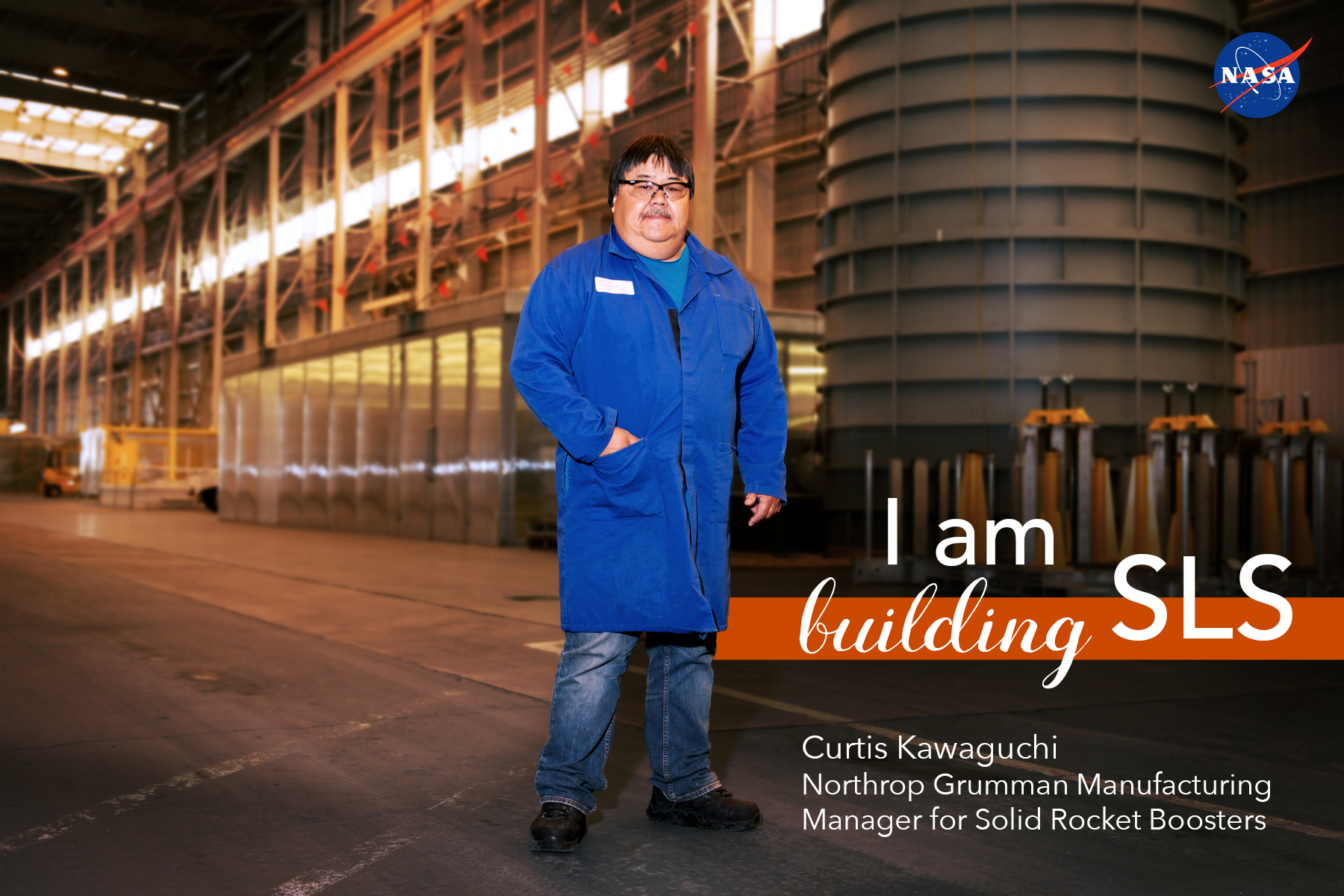I Am Building SLS: Curtis Kawaguchi

I’m proud to be part of building NASA’s new rocket, the Space Launch System that will return astronauts to the Moon. As a manager at Northrop Grumman’s facility in Promontory, Utah, I oversee the operations for the casting and assembly of the boosters for SLS that will provide more than 75 percent of total thrust at liftoff, sending NASA’s Orion spacecraft to space.
I supervise about 22 production operators here at Promontory, helping to organize each day’s schedule — and looking ahead to the next day’s to see what needs to be done before casting operations begin. There are many moving parts for casting the booster motor segments. Our work begins in the casting pits, where an empty case is broken over horizontally and vertically and a core is inserted. Then, the rocket motors are filled with propellant. A typical cast takes longer than 24 hours.
During casting, one of the areas I focus on is SLS boosters’ igniters and separation motors. The separation motors are small — about 24 inches — and they fire to separate the boosters from the rocket’s core stage. The motor segments provide the majority of thrust at liftoff. The ignitors and the main motor work in tandem; when the ignitors light, solid fuel begins to burn, helping the rocket to rise from the pad.
There are many things about my job that are amazing. What we do here is something nobody else does — and it’s really cool that we’re developing new rockets for the future. The boosters for SLS are the largest, most powerful solid propellant boosters ever built for flight. At launch, both boosters generate a total of 7.2 million pounds of thrust — more thrust than 14 four-engine jumbo commercial airlines.
Earlier this year, my team completed the manufacture and checkout of 10 motor segments that will power the boosters for the first SLS flight. They will be shipped to NASA’s Kennedy Space Center in Florida where they’ll be stacked to form the final boosters for launch. Once fully assembled at Kennedy, each booster will be taller than the Statue of Liberty, or about 17 stories tall, and will bear the entire weight of the rocket on the launchpad before sending SLS and Orion to space.
The people are the best part about this job; I’ve worked with a lot of really good people over the years. With all the time we spend together, working toward NASA’s next deep space rocket, we are like family.
Growing up and living in Utah, I’ve always enjoyed exploring far-flung corners of the world. Whether it’s California’s Redwood National Park or the stunning canyons of southern Utah, the natural beauty and solitude of the great outdoors are the places I’m drawn to most.
Space is the ultimate frontier. I’ve been fortunate to see several space shuttle launches, including three for work and another as a Launch Honoree, but the first SLS launch will be something else entirely. It will launch a whole new era of lunar exploration and help us learn what we need to send astronauts safely to Mars.

























